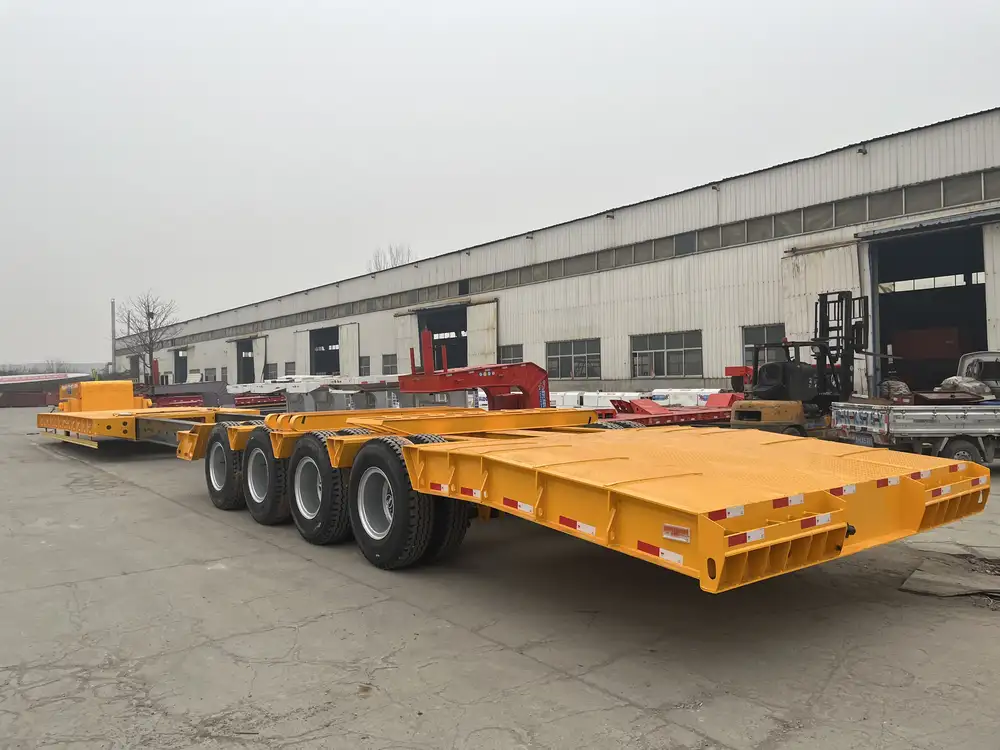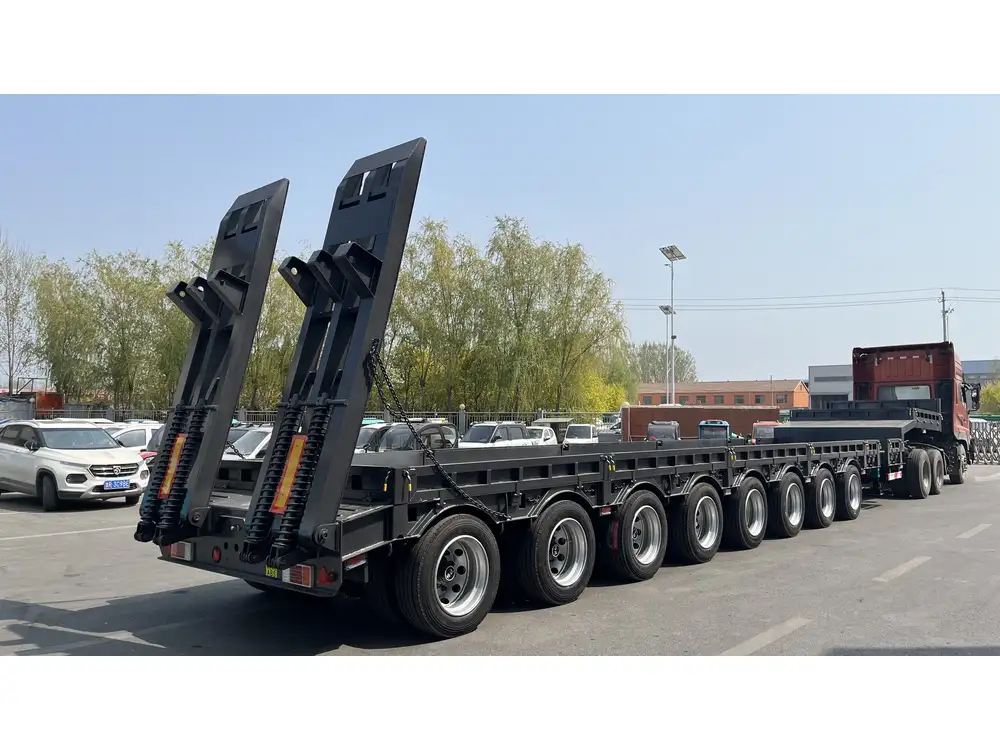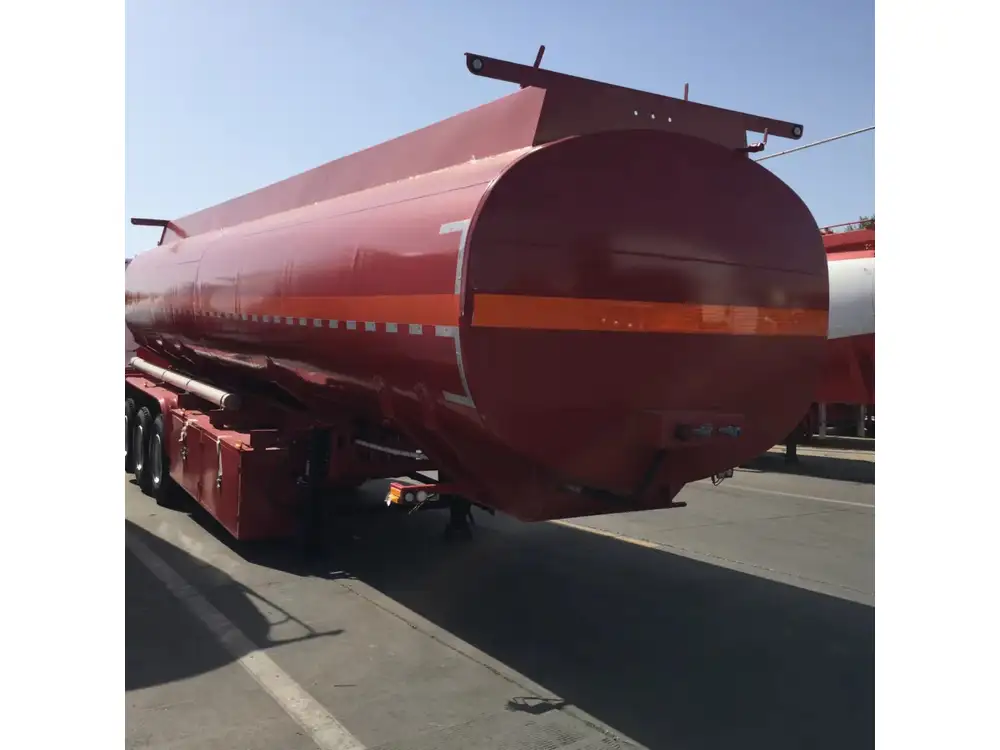When it comes to the transportation industry, understanding the dimensions of a semi-truck trailer is crucial for manufacturers, fleet operators, and logistics planners alike. These dimensions play a pivotal role in determining cargo capacity, regulatory compliance, compatibility with trucks, and operational efficiency. In this guide, we explore the various dimensions of semi-truck trailers, their importance, and how they affect your operations.
1. Standard Dimensions of Semi-Truck Trailers
1.1 Length
The length of a semi-truck trailer can vary significantly based on its type and purpose. Here’s a detailed breakdown:
| Type of Trailer | Standard Length |
|---|---|
| Flatbed | 48 to 53 feet |
| Dry Van | 48 to 53 feet |
| Reefer (Refrigerated) | 53 feet |
| Tanker | 40 to 53 feet |
| Car Carrier | 48 to 53 feet plus additional assets (e.g., rail) |
Key Insights:
- Most trailers are either 48 or 53 feet long because these lengths maximize freight efficiency while minimizing empty miles.
- Flatbed trailers may also extend their length with additional cargo nets.

1.2 Width
The typical width of a semi-truck trailer is subject to federal regulations. Understanding these specifications ensures compliance:
| Vehicle Category | Standard Width |
|---|---|
| Interstate Standards | 8.5 feet (102 inches) |
| Some states (for special trailers) | Up to 10 feet (120 inches) |
Key Insights:
- The standard width of 8.5 feet allows for a balanced load distribution, minimizing sway during transport.
- Wider trailers (up to 10 feet) may incur special permits and slower speed limits.
1.3 Height
The height of a semi-truck trailer affects clearance and load management:
| Type of Trailer | Standard Height |
|---|---|
| Dry Van | 13.5 to 14.5 feet |
| Flatbed/Lowboy | 10 to 13.5 feet |
| Reefer | 13.5 to 14.5 feet |
| Tanker | 11 to 14.5 feet |
Key Insights:
- The maximum legal height allowed on most U.S. highways is typically 13 feet 6 inches. Exceeding this can result in fines and operational hazards.
- Reefer trailers, designed for temperature control, tend to be taller due to their insulation.
2. Load Capacities and Weight

2.1 Gross Vehicle Weight Rating (GVWR)
The GVWR denotes the maximum safe weight of a fully loaded vehicle, including the weight of the trailer and its cargo. This varies by trailer type:
| Type of Trailer | Typical GVWR |
|---|---|
| Flatbed | 80,000 lbs |
| Dry Van | 80,000 lbs |
| Reefer | 80,000 lbs |
| Tanker | 80,000 lbs or more depending on content |
| Car Carrier | 80,000 lbs |
2.2 Payload Capacity
The payload capacity is crucial for operational efficiency. This reflects how much cargo a trailer can carry after deducting its tare weight (the weight of the trailer itself):
- Flatbed Trailers: Approximately 48,000 – 52,000 lbs, depending on the unit’s tare weight.
- Deep Van Trailers: Can typically carry up to 60,000 lbs depending on design and configuration.
3. Special Considerations for Custom Trailers

3.1 Extended Trailers
For specialized transport needs, extended trailers are available, usually designed for heavy or oversized shipments:
- Specifications: These can range from 53 feet to 60 feet in length, often requiring special permits.
- Weight considerations: Carefully assessing weight limits is essential; these trailers can often exceed the standard GVWR.
3.2 Multi-Axle Trailers
Multi-axle trailers offer superior weight distribution:
| Axle Type | Typical Axles | Max Load Distribution |
|---|---|---|
| Tri-axle Trailers | 3 | 80,000 lbs |
| Quad-axle Trailers | 4 | 100,000 lbs |
4. Regulatory Dimensions: Height, Width, and Length Limits
Understanding federal and state regulations regarding trailer dimensions can prevent legal complications and ensure safety:
- Federal Regulations: Typically, the maximum length allowed on non-interstate highways for tractor-trailers is 75 feet.
- Width Variations: States often have their own specific limits for trailers above 8.5 feet.
- Height Limits: Most states adhere strictly to the 13-foot 6-inch rule.
For example, the following table summarizes critical federal limits and variances:
| Dimension | Federal Limit | State Variance |
|---|---|---|
| Max length | 75 feet | 60-65 feet for specialized trucks |
| Max width | 8.5 feet | Up to 10 feet with permits |
| Max height | 13.6 feet | Varies; some states allow 14 feet |

5. Optimizing Your Fleet: Choosing the Right Trailer Dimensions
5.1 Assessing Cargo Needs
Choosing the correct trailer dimensions largely depends on the type of cargo being transported. Here’s how to categorize your needs:
- General Freight: Standard dry vans (48-53 feet, up to 60,000 lbs) should be your go-to.
- Heavy Equipment: Flatbeds or lowboys are preferred due to their loading flexibility and ease of access.
- Temperature-Controlled Goods: Reefer trailers with their height and insulated designs are essential for perishables.
5.2 Route Planning and Legal Compliance
Routing plays a significant role in logistics. Key aspects to consider include:
- Bridge Clearances: Always check local bridge heights on your routes to avoid clearance issues.
- Weight Restrictions: Be aware of weight limits on different bridge types, which can affect heavier loads.

6. Frequently Asked Questions (FAQs)
6.1 What is the maximum permissible weight for a semi-trailer?
Typically, the maximum permissible weight for a fully loaded semi-trailer is 80,000 lbs on federal highways.
6.2 How do regulations differ by state?
Regulations can vary, especially regarding width and overall length. Always consult the Department of Transportation for the specific state.

6.3 What factors affect the dimensions of a semi-truck trailer?
Several factors play a role, including cargo type, route restrictions, and manufacturer designs.
6.4 Is it essential to know the dimensions of a trailer?
Absolutely. Not only does this knowledge facilitate optimal loading and safety, but compliance with transportation laws is critical for operational viability.
7. Summary: Making Informed Decisions
When it comes to semi-truck trailers, dimensions are not just numbers; they represent the backbone of logistics, affecting everything from pricing strategies to compliance and safety. Understanding the specifics of length, width, height, and weight can significantly impact operational efficiency and cost-effectiveness.
In a constantly evolving transportation landscape, ensuring that you are informed about the dimensions of semi-truck trailers will empower you to make better decisions and adapt to changing industry standards. Whether you’re modifying a fleet or devising new routes, this guide serves as a comprehensive reference point for navigating the complexities of trailer dimensions and utilization effectively.
By focusing on these essential dimensions, we facilitate the ability to optimize cargo, comply with regulations, and ultimately enhance your overall logistics strategy.



